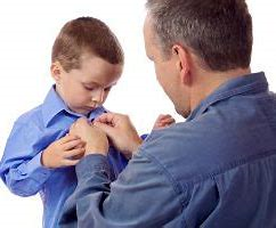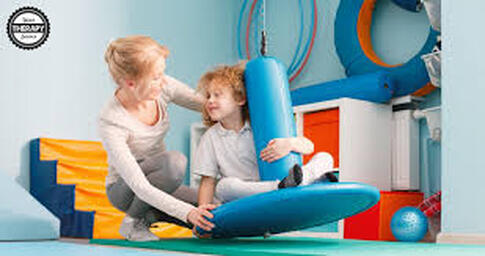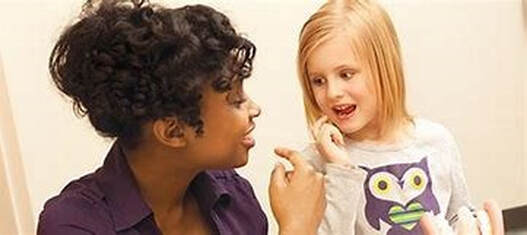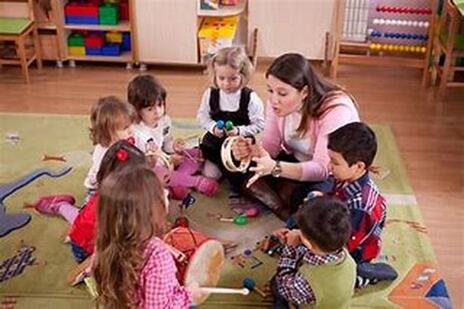What is the most concerning or destructive thing that is going on right now in your child’s world? Where to look for HELP?
Note: Read more about ‘Other Therapies’ in FREE ASD Book –
Luker, S. (2024) Know Autism, Know Your Child, with < My Thoughts > by Sara Luker: UNIT 7- 2, SECTION 2.
The following THERAPIES & CAMs (RDI, SIT/SPD, ST, TEAACH) without intent or suggestion of status or effectiveness.
NOTE: PROCEED WITH CAUTION. Complementary and Alternative Medicine (CAMs) treatments are still very controversial and may even be very dangerous. Before starting any treatment program, investigate thoroughly, and ALWAYS, ALWAYS talk to your child’s doctor first.
Relationship Development Intervention® (RDI) was developed by psychologist Steven Gutstein, Ph.D. (2019), a family-based, behavioral treatment designed to address autism’s core symptoms. (RDI) builds on one’s ‘dynamic intelligence’, defined as the ability to think flexibly. Including integrating different incoming sensory information, appreciating different perspectives, and coping with change.
RDI is a model which teaches parents how to guide their child in a reciprocal relationship. Most families spend 2 ½ hours daily participating and making meaningful changes to their lives. RDI takes place in the family’s unique cultural home setting and usually lasts for an initial period of 30+ weeks.
Whiffen (2009) tells how she learned about RDI – I received an email from my Yahoo! Group regarding this new treatment called RDI. At first, I blew it off as being the’ new treatment choice of the month’, but as I started researching it further, I was really impressed with how it addresses the core deficits of autism.
I recently finished reading the book Relationship Developmental Intervention (RDI) with Young Children by Steven Gutstein. This new way of teaching our kids really makes sense. But, I need to know how he is progressing.
< My Thoughts > “…I need to know…”
Knowing how a child is doing, as they progress through a therapy, should not be assumed. When choosing a therapy, determine what kinds of data, and tracking they will provide; as your child moves through the phases of the program. It’s also an important part of distinguishing your child from their autism.
2. Sensory Integration Therapy (SIT) for Sensory Processing Disorder (SPD)
Sensory Integration Therapy (SIT) is designed to offer specific forms of sensory stimuli in the appropriate amounts, with the aim of improving how the nervous system processes sensory stimuli. Therapists who use SIT may have a child with ASD wear a weighted vest, swing, sit on a bouncy ball, or be compressed between pillows.
Rudy (2019) remarks that sensory issues became an official part of the diagnosis, described as: "Hyper- or hypo-reactivity to sensory input or unusual interests in sensory aspects of the environment (e.g., apparent indifference to pain/temperature, adverse response to specific sounds or textures, excessive smelling or touching of objects, visual fascination with lights or movement)."
Sensory processing disorder can be disabling because it interferes with so many ordinary activities of daily life. A relatively new technique, sensory integration therapy (SIT), was developed to help people with and without autism to lower their reactivity and improve their ability to participate in a wide range of activities
According to Bogdashina, O. & Casanova, M. (2016), recent research has provided evidence for the sensory theory of autism and the possibility of diagnosing autism in very young children, if the ‘sensory symptoms’ are taken into account. Research evidence indicates that sensory perceptual differences may be among the first signs of autism in young children.
3. Speech Therapy (ST) aka Speech & Language Therapy (SLT)
Cariello, C. (2015) conveys that even though I knew that Jack could hear someone open a bag of animal crackers from three rooms away, I fostered a tiny seed of foolish hope that maybe, just maybe, he was hearing impaired. Maybe all of this could be solved with a simple crash course in sign language. Nope, not deaf.
So, by the time Jack was sixteen months, we had a speech therapist and a special education teacher working with him weekly. We wanted to have him tested to figure out the source of his language delay.
< My Thoughts > “…we had a speech therapist…”
Parents of non-verbal children often ask me, “Why spend time with a speech therapist when he can’t talk?” Speech and Language therapists work on so many other forms of communication, plus social skills. For example, when playing a simple game, the therapist teaches ‘joint attention’ through turn-taking, waiting for the child to ‘initiate’ the next move. They teach and praise when a child shows patience in ‘anticipation’ of what is going to happen next. Getting a sense of whether or not the child can ‘predict’ what others are thinking or going to do, is important for ‘social communication’.
A speech therapist conducts a series of formal, or informal assessments of the child’s ‘receptive & expressive’ language. ‘Receptive’ language is basically recognizing the words they are hearing. While ‘expressive’ language is being able to say the ‘words’ which they need to express
4. Treatment and Education of Autistic & related Communication-handicapped Children (TEACCH)
Treatment and Education of Autistic & Related Communication-Handicapped Children (TEACCH) uses visual cues to teach skills. For example, picture cards can help teach a child how to get dressed by breaking the information down into small steps. It teaches pro-social behavior for children between 2 – 12 years old. A model designed as a strategy for facilitating language development.
The TEACCH method helps the autistic person better understand and function in his or her environment through the use of structured physical and visual cueing. The person has constant step-by-step references to guide him or her to navigate their environment.
< My Thoughts > “…use of structured physical and visual cueing…”
TEACCH methods are used by many teachers to get the desired outcome they are looking for, especially when teaching a complex subject or procedure, step-by-step. The structure of a visual schedule, color-coding, numbering steps, sequencing, placing things to do first at eyelevel, helps learners to internalize and generalize new information. For instance, ABA has been said to teach your child to adapt to the environment, while TEACCH is said to adapt the environment to suit your child. The programs seem to be ‘polar opposites’; therefore, they probably will have conflicting results. Even more reason to Know Autism, Know Your Child.
Mitchell, S. (2017) makes a point about how children often don’t understand how ‘big’ things are accomplished by taking ‘little steps’. Especially to kids like Kyle, ‘routine’ is so important. She relates a story about preschooler Kyle and his dad, Ben.
“When you have autism, the world can be a scary place. It can seem that things come at you from all sides. You’re contending with the sensory issues when every touch, every sound, every light can feel like just too much.”
The severity of a child’s behavior, the amount of support, the temperament of the child and parents all contribute to the family becoming isolated or seeking help. Help can come from Programs, Therapies, & other Interventions. Thompson tells us too that intensive home-based therapies require strong family skills and collaboration. That parents are the conduit by which therapists’ efforts are realized.
References:
Bogdashina, O. & Casanova, M. (2016). Sensory Perceptual Issues in Autism and Asperger Syndrome, Different Sensory Experiences – Different Perceptual Worlds; Second Edition: London; Philadelphia: Jessica Kingsley Publishers.
Cariello, C. (2015). What Color is Monday? How Autism Changed One Family for the Better; eBook Edition.
Luker, S. (2024); Know Autism, Know Your Child with < My Thoughts > by Sara Luker; Retrieved online from – www.sarasautismsite.com
Mitchell, S. (2012). Autism Goes to School: School Daze Series, Book 1; eBook Edition.
Rudy, L. (2019). Sensory Integration Therapy & Autism; Very Well Health, Online Magazine; Retrieved online from –
https://www.verywellhealth.com/sensory-integration-therapy-and-autism-260509/
Whiffen, L. (2009). A Child’s Journey Out of Autism: One Family’s Story of Living in Hope and Finding a Cure; eBook Edition.
Note: DISCLAIMER – Autism ‘intervention’, as with the phrase ‘Early Detection / Early Intervention’, may simply mean to attempt an ‘action’, or attempt to ‘change a course’ or ‘trajectory’ of the person’s autism. Any expectation for a successful ‘change’ must have the cooperation of the participant, the parent, and/or the assigned therapist. Words such as, ‘intervention’, ‘treatment’, ‘therapy’, ‘service’, or ‘program’ imply ‘cure’, or ‘long-term’ positive effect. That is NOT my intention here, and all information is presented without intent or suggestion of status or effectiveness.
End of DAY TWENTY-ONE.
Note: Excerpts from the books – (13% indicates location in the Kindle version of the eBook, instead of page numbers).
Sharing of my website and BLOG Comments welcomed. Thank-you to those of you who have sent comments... much appreciated!
Regards,
Sara Luker




 RSS Feed
RSS Feed